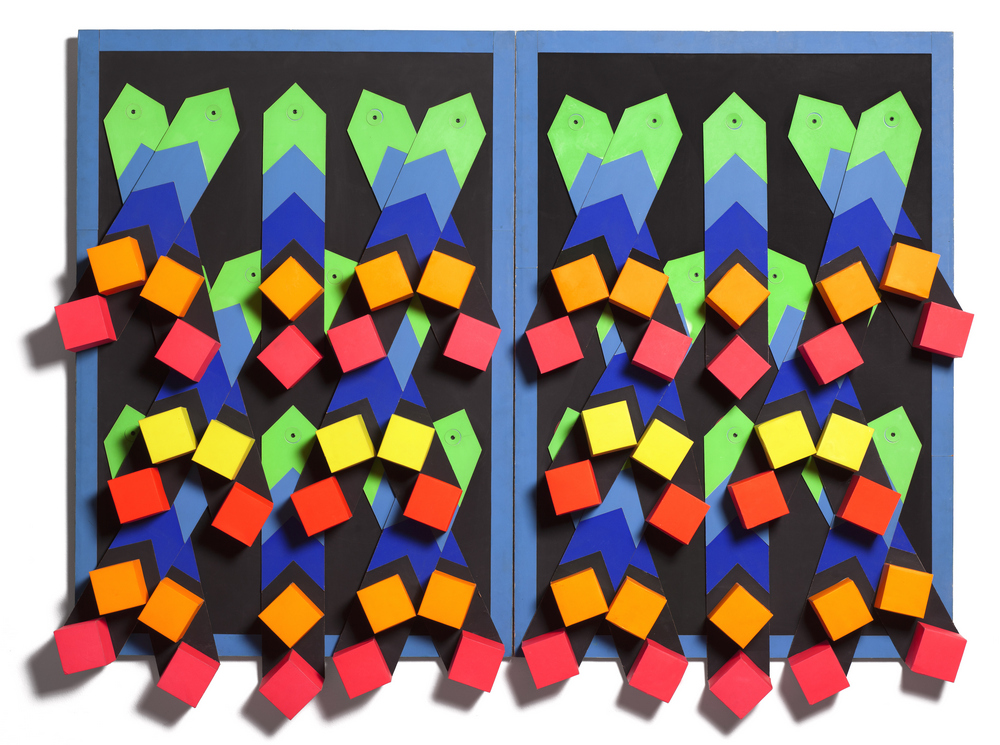Instructions for Watching – What the Body Wants?
4.5.–1.7.2018.

Let’s celebrate our 70th birthday together!
Exhibitions from the MMSU collections, May – July, September –2018
Instructions for Watching – What the Body Wants?
Opening: May 4, 2018, 20:00
Gorgona Nova, performance of a multimedia art group, May 4, 20:30
Artists: Getulio Alviani, Vojin Bakić, Alberto Biasi, Jakov Brdar, Ivan Čižmek, Tomislav Ćurković, Vlasta Delimar, Boris Demur, Juraj Dobrović, Igor Eškinja, Ivan Faktor, Ivo Gattin, Nina Ivančić, Sanja Iveković, Olga Jančić, Željko Jerman, Marijan Jevšovar, Ivo Kalina, Željko Kipke, Ivan Kožarić, IRWIN, Julije Knifer, Vlado Kristl, Ferdinand Kulmer, Mirna Kutleša, Stevan Luketić, David Maljković, Marijan Molnar, Vlado Martek, Dalibor Martinis, Paula Muhr, Edo Murtić, Dan Oki, Hermann J. Painitz, Šime Perić, Goran Petercol, Ivan Picelj, Božidar Rašica, Igor Rončević, Franc Rotar, Aleksandar Srnec, Miroslav Šutej, Nikola Ukić, Victor Vasarely, Vilko Žiljak; Pozvani umjetnici: Marija Ančić, Tajči Čekada, Ivana Pegan Baće, Davor Sanvincenti
In celebration of the Museum’s 70th birthday, we are preparing an exhibition series that thematizes the museum’s collection. The exhibitions will be held throughout May and June in the new spaces of the Museum, the former Rikard Benčić factory, and in July, August and October in the Mali salon. We are going to present about seventy works, and this will be accompanied with various activities: workshops, playrooms, guided tours and talks.
Instructions for Watching – What the Body Wants? aims to capture art movements and ideas formed from mid-20th century onward, which use the body as a potential guide for understanding art. In a word play suggested by the title, instructions for watching turn into instructions for use of various artworks, from the perspective of the artist’s body i.e. artwork or from the perspective of the visitor i.e. observer. As the first and the largest unit of the exhibition series, Instructions for Watching, with approximately fifty works, are spreading across three hundred square meters of the Museum’s first floor. This is the first exhibition of the Museum’s collection after Formally – Engaged, which marked the Museum’s 60th anniversary in 2008. Along with anthological works and well-known names, Instructions for Watching, in a more or less linear fashion, bring less known works that sparked some interesting changes in the perception of a work of art. In doing so, the Instructions give us an overview of multiple modifications (acceptances or rejections) of traditional aesthetic categories of the beautiful and the sublime and reshape the position of the artist in the comprehensiveness of the civilization discords.
The current program gives us the opportunity to rehearse a flexible model of organizing exhibitions. Such model opens up various possibilities for enriching the existing contents and for creating different educational and participatory programs, thereby encouraging people’s interest in meeting with art. Our intention is to move away from the perception of museum as an invisible ‘temple’ of art and to present it as a social space that questions the conventions in judgments about art.
In July, August and October, we are putting on smaller scale exhibitions dedicated to the studies of particular collections, from The Body in Dialogue – a Selection from the Drawing and Painting Collection to Performative Practices from the Collection of Photography, New Media Art, Film and Video, which will be held in Mali salon.
Accompanying events:
May 8 – May 18 — Dream Boat, the 23rd Museum Education Action marking the International Museum Day, organized by the Croatian Museum
Association
May 18, 6 p.m. — International Museum Day, presentation of an interactive museum game
May 19, 5 p.m. – — workshops for children What the Body Wants?
June 6, 7 p.m. — lecture by Barbara Steiner (Kunsthaus, Graz) about modern ways of presenting museum collections
June 21, 7 p.m. — presentation of Beni, the museum’s first fanzine?
— Guided tours and workshops for students of primary and secondary schools, registration contact:: milica.dilas@mmsu.hr
Curators: Vilma Bartolić, Ksenija Orelj, Sabina Salamon, Nataša Šuković
Education: Milica Đilas, museum educator; Kora Girin, Marina Tkalčić
Exhibition design: Marino Krstačić Furić and Ana Tomić
Supported by: The City of Rijeka, the Ministry of Culture of the Republic of Croatia, the Austrian Cultural Forum